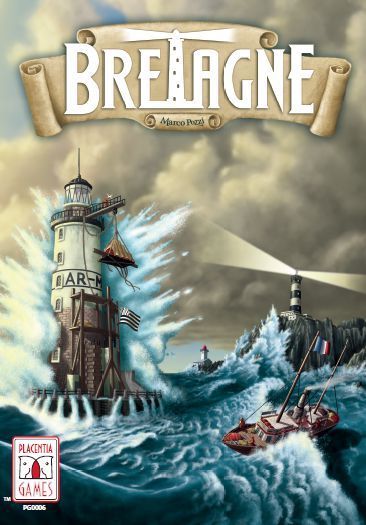Bretagne (2015) Board Game
Bretagne is a board game released in 2015, designed by Alan D’Amico. It falls under the economic category and offers a gameplay experience focused on area majority/influence, hand management, turn order, variable player powers, variable set-up, and worker placement mechanics. The game is designed for 2-4 players, with a recommended age of 14 and above.
Game Components of Bretagne
How To Setup Bretagne
To set up Bretagne, players start by placing the game board, which displays the map of Brittany. The game is played in 5 rounds or until all 15 lighthouses are built. In a 2-3 player game, some lighthouses are pre-constructed to ensure balanced gameplay. The setup includes distributing a fixed amount of resources and engineers in Brest, randomizing construction tiles, and determining the resources available in Quimper. Weather cards are also drawn to forecast the conditions for the current and next round. Only 9 out of 12 harbors are used in each game, adding variability to the setup.
Gameplay Mechanics and Game Objective
Mechanics
Game Objective
Player Experience
In Bretagne, players are immersed in a strategic and tactical game of resource management and worker placement. Each turn consists of five phases: setup, resource acquisition, actions, evaluations, and end-of-round. Players must carefully choose their barge cards, which determine turn order and resource capacity, and decide how to allocate their workers to maximize their chances of building and equipping lighthouses. The game requires a balance between immediate scoring and long-term strategy, making it engaging and challenging for players.
Pros
Cons
Personal Thoughts on Bretagne
Bretagne is ideal for fans of economic and worker placement games who enjoy strategic planning and resource management. It offers a challenging yet rewarding experience, making it suitable for experienced board game enthusiasts. However, due to its complexity and length, it may not be the best fit for casual gamers or those new to the hobby. The game’s historical theme and detailed design add a unique layer of immersion, making it a standout in the genre.
We are supported by our audience. When you purchase through links on our site, we may earn an affiliate commission, at no extra cost for you. Learn more.

